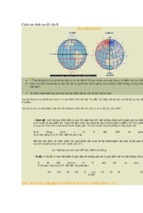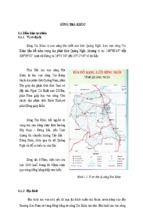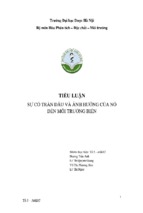ADVANCESIN COASTALMODELING
Elsevier Oceanography Series
Series Editor: David Halpern (1993-)
FURTHER TITLES IN THIS SERIES
V o lu me s 1-36, 38, 39, 41, 42, 4 3 , 44, 45, 4 7 ,
50, 51 a n d 52 are o u t o f p r i n t .
37.
40.
46.
48.
49.
53.
54.
55.
56.
57.
58.
59.
60.
61.
62.
63.
64.
65.
66.
W. Langeraar
Surveying and Charting of the Seas
J.C.J. Nihoul (Editor)
Coupled Ocean-Atmosphere Models
J.C.J. Nihoul (Editor)
Small-Scale Turbulence and Mixing in the Ocean
S.R. Massel
Hydrodynamics of Coastal Zones
V.C. Lakhan and A.S. Trenhaile (Editors)
Applications in Ocean Modeling
J. Dera (Editor)
Marine Physics
K. Takano {Editor)
Oceanography of Asian Marginal Seas
Tan Weiyan
Shallow Water Hydrodynamics
R.H. Charlier and J.R. Justus
Ocean Energies, Environmental, Economic and Technological Aspects of
Alternative Power Sources
P.C. Chu and J.C. Gascard (Editors)
Deep Convection and Deep Water Formation in the Oceans
P.A. Pirazzoti, J. Pluet
World Atlas of Holocene Sea-Level Changes
5: Teramoto (Editor)
Deep Ocean Circulation - Physical and Chemical Aspects
B. Kjerfve (Editor)
Coastal Lagoon Processes
P. Malanotte-Rizzoli {Editor)
Modern Approaches to Data Assimilation in Ocean Modeling
J.H. Stel, H.W.A. Behrens, J.C. Borst, L.J. Droppert and J.P. van der Meulen
(Editors)
Operational Oceanography
D. Halpern (Editor)
Satellites, Oceanography and Society
P. Boccotti
Wave Mechanics for Ocean Engineering
Richard E. Zeebe and Dieter Wolf-Gladrow
C02 in Seawater: Equilibrium, Kinetics, Isotopes
N.C. Flemmi ng (Editor-in-C hief 1
Operational Oceanography: Implementation at the European and
Regional Scales
Elsevier Oceanography Series, 67
ADVANCES IN COASTALMODELING
Editor
V.C. Lakhan
School of Physical Sciences,
Windsor, Canada
2003
ELSEVIER
A m s t e r d a m - B o s t o n - H e i d e l b e r g - L o n d o n - N e w York - O x f o r d
P a r i s - San D i e g o - San F r a n c i s c o - S i n g a p o r e - S y d n e y - T o k y o
E L S E V I E R B.V.
Sara Burgerhartstraat 25
EO. Box 211, 1000 AE Amsterdam, The Netherlands
9 2003 Elsevier B.V. All rights reserved.
This work is protected under copyright by Elsevier, and the following terms and conditions apply to its use:
Photocopying
Single photocopies of single chapters may be made for personal use as allowed by national copyright laws. Permission of the
Publisher and payment of a fee is required for all other photocopying, including multiple or systematic copying, copying for
advertising or promotional purposes, resale, and all forms of document delivery. Special rates are available lbr educational
institutions that wish to make photocopies for non-profit educational classroom use.
Permissions may be sought directly from Elsevier's Technology Rights Department in Oxfi3rd, UK: phone: (+44) 1865
843830, fax: (+44) 1865 853333, e-mail:
[email protected]. You may also complete your request on-line via the
Elsevier Science homepage (http://www.elsevier.com), by selecting 'Customer Support' and then 'Obtaining Permissions'.
In the USA, users may clear permissions and make payments through the Copyright Clearance Center, Inc., 222 Rosewood
Drive, Danvers, MA 01923, USA; phone: (+ 1) (978) 7508400, fax: (+1) (978) 7504744, and in the UK through the Copyright
Licensing Agency Rapid Clearance Service (CLARCS). 90 Tottenham Court Road, London W 1P 0LP, UK; phone: (+44) 207
631 5555; tax: (+44) 207 631 5500. Other countries may have a local reprographic rights agency for payments.
Derivative Works
Tables of contents may be reproduced for internal circulation, but permission of Elsevier is required for external resale or
distribution of such material.
Permission of the Publisher is required for all other derivative works, including compilations and translations.
Electronic Storage or Usage
Permission of the Publisher is required to store or use electronically any material contained in this work, including any chapter or part of a chapter.
Except as outlined above, no part of this work may be reproduced, stored in a retrieval system or transmitted in any tbrm or
by any means, electronic, mechanical, photocopying, recording or otherwise, without prior written permission of the Publisher.
Address permissions requests to: Elsevier's Technology Rights Department, at the phone, fax and e-mail addresses noted
above.
Notice
No responsibility is assumed by the Publisher for any injury and/or damage to persons or property as a matter of products liability, negligence or otherwise, or from any use or operation of any methods, products, instructions or ideas contained in the
material herein. Because of rapid advances in the medical sciences, in particular, independent verification of diagnoses and
drug dosages should be made.
First edition 2003
Library of Congress Cataloging in Publication Data
A catalog record from the Library of Congress has been applied for.
British Library Cataloguing in Publication Data
A catalogue record from the British Library has been applied for.
ISBN:
ISSN (Series):
0 444 51149 0
0422 9894
O The paper used in this publication meets the requirements of A N S I / N I S O Z39.48-1992 (Permanence of
Paper).
Printed in The Netherlands.
Preface
Overview of Advances in Coastal Modeling
It is now established that models are becoming indispensable not only for understanding and predicting the dynamics at work in the coastal system, but also for effective decision making and efficient
solutions to complex problems in the coastal environment. Progressively more sophisticated models
are now illuminating the complex dynamics operating in the large-scale coastal system and its interacting subsystems, thereby leading to major advances in our comprehension of the various coastal
characteristics (for example, morphology, water quality, and ecology), and the governing physical
processes such as waves, tides, currents, and sediment movement.
With the understanding that the proliferation of coastal models in the diverse literature increases
the difficulty of obtaining from one source an integrated account of recent advances and present stateof-the-art knowledge in the various aspects of coastal modeling, it is becomes academically justified
to unify and enhance the accessibility of contemporary coastal modeling research. This book, therefore, has the primary purpose of consolidating a comprehensive range of current coastal models and
enlightening, timely review chapters to emphasize advances in significant areas of coastal modeling. The expected readership of senior students, academics, researchers, practicing professionals and
all those interested in the modeling of coastal and oceanic processes and characteristics will obtain
invaluable insights in scholarly research on coastal modeling.
To address the wide diversity of coastal models efforts have been made to present a book which
is neither a narrowly specialized nor an all encompassing presentation on advances in coastal modeling. In choosing and organizing a representative selection of models from the broad spectrum of
coastal models, critical decisions were required on what to include and what to exclude. Apart from
considering the overall scope of the book, chapter selection was also aided by several criteria, including contents of an extensive coastal modeling database established in the late 1980's when I was
first contracted to edit a book on coastal modeling, knowledge of articles for a forthcoming issue on
coastal morphodynamic modeling which I am now editing, and an understanding of modeling skills
required to encourage active participation in the coastal modeling process.
While the preferential selection of chapters provides a broad perspective on coastal modeling it
should, nevertheless, be emphasized that the book is not intended to be an exhaustive account of advances in coastal modeling. The omission of certain topics does not imply that they are unimportant,
but space limitations prevented including as many as are needed to do justice to the multifaceted aspects of coastal modeling. One of the unique strengths of the book is that the selected chapters bring
together, from fourteen different countries, the special knowledge and expertise of coastal modelers
who are with universities, the military, consulting and research institutions. The twenty-one chapters
are representative of the scholarly advancement of contemporary research in coastal modeling. In addition to chapters modeling the dynamic natural processes of waves, currents, circulatory flows and
sediment transport there are also chapters that focus on the modeling of beaches, shorelines, tidal
basins, and shore platforms. The substantial scope of the book is further strengthened with chapters
concentrating on the effects of coastal structures on nearshore flows, coastal water quality, coastal
pollution, coastal ecological modeling, statistical data modeling, and coupling of coastal models with
geographical information systems.
In editing each chapter, efforts have been made to maintain clarity and coherency, without sacrificing the personal writing styles of each of the contributors. Each chapter is self-contained and can
be read on an individual basis, but greater insights of the coastal system can be obtained when the
chapters are read in selected groupings. In the contextual framework of the book, the subject matter
is organized according to broad thematic groupings or specific topic areas. As shown in the overview
vi
presented below, there are chapters on waves and nearshore currents (Chapters 1 to 4), spectral
and probabilistic modeling of waves (Chapters 5 and 6), effects of coastal structures on waves and
nearshore flows (Chapter 7), sediment transport mechanics (Chapters 8 to 10), coastal morphological characteristics (Chapters 11 to 14), water circulation (Chapter 15 and 16), water quality and
pollution of coastal waters (Chapter 17 and 18), coastal ecological modeling (Chapter 19), statistical modeling of beach and shoreline data (Chapter 20), and geographical information systems and
coastal modeling (Chapter 21).
The first group of chapters includes state-of-the-art models on the dynamics of waves and
nearshore current processes. Given the robust basis and widespread acceptance of the extended
Boussinesq equations for computing surface wave motion in coastal areas, the book begins with
a comprehensive discussion of Boussinesq models and applications to nearshore wave propagation,
surf zone processes and wave-induced currents. Chapter 1 reviews a number of recent developments,
and then evaluates the strengths and limitations of the present state of the modeling technique. In a
very informative presentation, the author makes it very clear that recent extensions to the theoretical
and empirical basis for modeling systems based on these equations now cover wave propagation from
deep to shallow water, and allow for the prediction of most surf zone phenomena, including wave
breaking, longshore currents, and swash behavior. In a continuation of advanced research on wave
modeling Chapter 2 presents a state-of-the-art account of nonlinear frequency domain models for
the nearshore and surf zones. The frequency domain transformations of extended Boussinesq models
are detailed with special emphasis given to the models' linear properties (frequency, dispersion and
shoaling). Nonlinear mild-slope equation models are outlined, and it is highlighted that frequency
domain development is performed in the context of parabolic models. The author also elaborates on
stochastic models based on the phase-resolving frequency domain models, and provides suggestions
for future research. To further our understanding of coastal hydrodynamics Chapter 3 presents advanced numerical techniques to solve the two-dimensional shallow water equations. These equations
are solved numerically using a modem, conservative, high resolution, Godunov-type scheme on a
Cartesian Cut Cell grid. The accurate and robust results from the numerical modeling provide the
author with justification to emphasize that the state-of-the-art solver is capable of not only resolving complex flow phenomena such as bore waves and hydraulic jumps, but can also be utilized to
investigate numerous practical problems in coastal engineering.
To overcome existing limitations in the modeling of nearshore currents Chapter 4 describes an
advanced numerical model of nearshore currents in a quasi three-dimensional field. The equations
associated with the wave and current modules are solved with efficient numerical methods. After performing rigorous tests the author is able to demonstrate clearly that the model has immense practical
applications because it can produce results which are in close agreement with measured data. Among
the operational uses of the model are the prediction of cross-shore current velocities, the computation
of longshore current velocity distributions, and the prediction of nearshore current velocities around
coastal structures.
The next two chapters focus on the spectral and probabilistic modeling of waves and their attributes. Chapter 5 emphasizes the development, utilization and application of spectral wave models
for global and regional wave forecasts. The author presents an elaborate review of the present stateof-the-art in spectral wave modeling in coastal environments. Differences between the SWAN and
the WAVEWATCH models are discussed, and the WAM-PRO model is highlighted. After presenting two examples demonstrating the use of a spectral wave model, the chapter concludes with a
thorough analytical discussion on prospects for expected developments in spectral wave modeling.
With the understanding that stochastic models provide a useful description of the spatial and temporal variabilities of wave fields in the ocean and coastal waters, Chapter 6 focuses on advances in
probabilistic models of waves in the coastal zone. The author selects and presents extensive stateof-the-art reviews on wave heights, wave periods, wave groups, time series models of sea states,
vii
long-term models and joint long-term models. In a critical assessment the author emphasizes that the
various models are used for either the analysis or the design and construction of coastal and offshore
structures.
Apart from understanding the dynamics and characteristics of waves and currents, it is also vital to
understand how waves and nearshore flows are affected by coastal structures. Chapter 7, therefore,
elaborates on advanced research in modeling the effects of permeable and reflective structures on
waves and nearshore flows. Recently developed models and their applications are reviewed, emphasizing the consequences of including the effects of porous flow in the general hydrodynamic model.
Models based on Boussinesq-type equations and the Navier-Stokes equation are advanced. In an analytical conclusion the author discusses the state-of-the-art, and expected trends in the modeling of
wave and porous structure interaction.
The waves and currents discussed in the preceding chapters have a strong influence on sediment
movement so the next group of chapters (8, 9 and 10) is on sediment transport modeling. In Chapter 8 the author communicates, in an informative, comprehensible style, his special knowledge on
evolution in sediment modeling. Analytical perspectives are presented on advanced capabilities in
numerical modeling of sediment dynamics, with emphasis placed on modeling of the boundary
layer within millimeters of the sea bed. Various empirical case studies are used to discuss modeling strengths and weaknesses. The author concludes by providing meaningful potential solutions to
sediment modeling problems in the coastal environment. The next chapter presents an innovative,
advanced modeling technique for large-scale simulations of flow and sediment transport processes
in coastal waters. In Chapter 9 the author employs parallel computation techniques to increase the
computational efficiency of a three-dimensional finite element sediment transport model. The parallelized model is run on a multiple instruction, multiple data Beowulf parallel computer system. The
simulated model results show good correlation with field measurements, thereby allowing the authors to justify the computationally efficient model as being capable of simulating hydrodynamic and
sediment transport patterns in coastal waters. Chapter 10 emphasizes the importance of the material
presented in Chapter 1 because it combines a wave model based on the higher-order Boussinesq-type
equations with two sediment transport modules (based on a detailed and on an energetics approach)
to investigate the process of sediment transport and morphological evolution in the nearshore zone.
By incorporating in the model recent advances in wave and sediment dynamics the author executes
the robust model to produce results in the cross-shore direction, indicating not only erosion and formation of a bar but also the recession of the shoreline. Moreover, the model results on longshore
transport rates are in excellent agreement with established findings.
The models presented in Chapters 11, 12, 13 and 14 concentrate on characteristics of coastal morphology which, to a great extent, are influenced by the waves, currents, sediments and other processes
discussed in the preceding chapters. In Chapter 11 the author considers the dynamics of a coastal
zone using analogy to a generalized dynamic system. By initializing an original coastal morphodynamic model with bathymetry, wave parameters, sediment characteristics, storm duration, and mean
water level, and then linking several coastal process modules the author presents the modeling of
short-term storm-induced deformations of nearshore morphology and long-term coastal evolution.
Model applications in two and three spatial dimensions permit the prediction of beach profiles with
time scales in the order of the duration of a storm event or an ensemble of storms and morphological
evolution during longer periods of several years to decades. After reviewing numerical beach change
modeling the authors of Chapter 12 provide a robust, state-of-the-art numerical model to simulate
the topographic evolution in the nearshore due to breaking waves and surf zone related processes.
The model calculates waves, mean water elevation, longshore currents, and cross-shore, longshore,
and swash zone sediment transport, and then computes beach changes from the sediment volume
conservation equation. Testing of the model with data from field measurements demonstrates that it
is computationally efficient, and very useful in engineering projects where time scales from individ-
viii
ual storms to seasonal variations are to be considered. Chapter 13 presents an advanced operational
model for understanding the morphodynamics and complexities of tidal basins and coastal inlets,
which on a world-wide basis, have immense social, economic and ecological importance. With the
recognition that there is inadequate knowledge to predict the evolution of tidal basins and their interaction with the coast on time scales much longer than the process scale, the authors concentrate
on expanding an aggregated-scale model. The significant findings from the operational model substantiate the process-aggregated approach, which allows for the hindcasting and possibly forecasting
of the morphodynamic behavior of tidal basins to natural and anthropogenic impacts on engineering
time scales. To improve on previous shore platform models concerned mainly with submarine erosion in tideless seas, the author of Chapter 14 presents an advanced model to study the evolution of
shore platforms and associated cliff recession on rocky coasts in wave dominated environments. The
model considers such factors as the tidal expenditure of wave energy, deep water wave conditions,
the rate of wave and surf attenuation in shallow water, offshore and submarine gradients, the height
of the breakers, the width of the surf zone, and the minimum or threshold wave force capable of
causing rock erosion. Extensive testing shows that the model can be used to simulate the erosion of
rock coasts in the inter-tidal zone.
The next two chapters are necessary because modeling of water circulation is important for understanding the physical, chemical, and biological processes operating in the near and offshore coastal
environment. Chapter 15 focuses on the dynamics of large-scale water circulation around a complex
bathymetry. The domain of the Great Barrier Reef is used to emphasize that a better understanding
of large-scale water circulation can be obtained by merging models with different spatial scales.
With the use of different two-dimensional and three-dimensional models the authors provide valuable insights on how processes operating at very different spatial and temporal scales interact. In an
analytical discussion it is recognized that feedback exists between scales, thereby making it necessary to identify small-scale processes that are relevant at larger scales, and then parameterizing these
processes in larger scale models. Chapter 16 highlights the operational use of the Princeton Ocean
Model (POM) to simulate not only water circulation, but also the thermohaline structure. With the
POM, a time-dependent, primitive equation circulation model that includes a realistic bottom topography, the authors judiciously analyze from a series of numerical experiments the qualitative and
quantitative effects of nonlinearity, wind forcing, and lateral boundary transport on the Japan/East
Sea. The results on temperature, salinity and velocity fields are consistent with observational studies thereby demonstrating that the numerical simulation can provide considerable insights into the
external factors affecting regional and coastal oceanography.
With the understanding that water quality and pollution of coastal waters and estuaries are issues
of great public concern, it becomes vital to utilize models on coastal pollution and water quality.
In Chapter 17 two analytical models are described for estimating the concentration of a dissolved
conservative constituent within a semi-enclosed tidal basin. Both models are based upon a "tidal
prism" or "zero-dimensional" approach, and use an analytical method to predict the temporal variations in pollutant concentration. From the substantial modeling results the author is able to highlight
the finding that the analytical approach offers a viable and computationally inexpensive alternative to
conventional multi-dimensional pollutant transport simulations, and also increases our understanding of the flushing characteristics of tidal basins. In Chapter 18 the author uses several case studies
from the United States to accentuate advances made in the past twenty years in coastal water quality
modeling. By deciding not to focus on the advances in the fundamental techniques of water quality
modeling, the author places special emphasis on a detailed analysis of the progress in coastal water
quality modeling from the aspects of computing power, linkages among models, model frameworks,
and process descriptions. While significant advancements have been documented the author, nevertheless, suggests the need for several improvements including developing dynamic linkages from
ix
coastal water quality models to various types of living resource models, such as bioenergetics and
population models.
The tremendous ecological significance of the coastal zone necessitates discussing the advances
in coastal ecological modeling. Chapter 19 concentrates on neural network applications in coastal
ecological modeling. Recognizing that neural network applications to ecological modeling are quite
recent, the author introduces neural networks as computational tools, and then provides relevant
information on their main features and technical particulars. Appropriate examples of neural network
models applied to coastal ecosystems are provided and analyzed. The chapter concludes with an
enlightening discussion of the state-of-the-art in neural network modeling, and provides perspectives
on their future development.
The use of statistical models in beach and shoreline monitoring programs is emphasized in Chapter 20. The author demonstrates that insights on the long-term temporal and spatial dynamics of
the nearshore system can be obtained by fitting statistical models to collected data. Box-Jenkins
Transfer Function modeling procedures are utilized to identify models which best describe a time
series (1978-2001) of beach and shoreline data. Modeling results highlight the influence of temporal
stochastic processes on the long range behavior of beach and shoreline variations. In monitoring programs the transfer modeling approach is found to be useful to detect shifts in phase states of beaches
and shorelines that occur through time and space.
It is now widely recognized that geographical information systems (GIS) bring an important new
dimension to coastal modeling. Chapter 21 explores some of the recent developments, progress
made, and some of the problems encountered in integrating GIS with coastal models. While space
limitations prevented the discussion of methodological developments in GIS the authors, nevertheless, elucidate that advances in computer hardware, software, display and visualization capabilities,
and user interfaces are enabling more widespread use of coastal modeling tools, facilitating opportunities for collaborative distributed networking and integrated spatial decision support system tools to
aid the coastal manager and practitioner in planning and decision making tasks. It is emphasized that
developments are continuing, and success is being achieved in integrating GIS with coastal models.
Dr. V. CHRIS LAKHAN
Professor, Earth Sciences
School of Physical Sciences
University of Windsor
November, 2002
This Page Intentionally Left Blank
Acknowledgments
My appreciation and acknowledgments to all contributors for their invaluable cooperation, and willingness to promote academic excellence. Each of the corresponding first author must be highly commended for outstanding expertise, scholarship and organizational efficiency.
Special gratitude also to Angela Keller for her superb technical and professional skills. Her industriousness and willingness to undertake challenging tasks are greatly appreciated.
Sincere thanks also to the many conscientious scholars who provided worthwhile professional
reviews of versions of chapters in this book. These include Dr. Cheryl Ann Blain, Ocean Dynamics and Predictions Branch, Naval Research Laboratory, Stennis Space Center; Professor Alistair
Borthwick, Department of Engineering Science, University of Oxford; Dr. Corey J.A. Bradshaw,
Antarctic Wildlife Research Unit, University of Tasmania; Dr. Luigi Cavaleri, Istituto per lo Studio
della Dinamica della Grandi Masse (ISDGM), Italy; Professor Sung-Uk Choi, Department of Civil
Engineering, Yonsei University, Korea; Dr. Joseph DiLorenzo, Najarian Associates, New Jersey;
Professor Barbara Boczar-Karakiewiecz, L'Institut des Sciences de lamer, Universit6 du Quebec;
Professor Stephan Grilli, Department of Ocean Engineering, University of Rhode Island; Professor Zygmunt Kowalik, Institute of Marine Science, University of Alaska; Professor Yok-sheung Li,
Department of Civil and Structural Engineering, Hong Kong Polytechnic University; Professor Binliang Lin, Cardiff School of Engineering, Cardiff University; Professor Phil McIver, Department
of Mathematical Sciences, Loughborough University; Professor Helena Mitasova, Department of
Marine, Earth and Atmospheric Sciences, North Carolina State University; Dr. Robert Nairn, Baird
and Associates, Oakville, Canada; Professor Peter Nielsen, Department of Civil Engineering, University of Queensland; Dr. Michel K. Ochi, University of Florida, Gainesville, Florida; Professor
H. Tuba Ozkan-Haller, College of Oceanic and Atmospheric Sciences, Oregon State University;
Professor Dominic Reeve, School of Civil Engineering, University of Nottingham; Professor Malcolm L. Spaulding, Department of Ocean Engineering, University of Rhode Island; Professor Wayne
Stephenson, School of Anthropology, Geography and Environmental Studies, University of Melbourne; Dr. Andrew Swales, National Institute of Water and Atmospheric Research, Hamilton, New
Zealand; Professor John D. Wang, Rosenstiel School of Marine and Atmospheric Science, University of Miami, and Professor Ian R. Young, Executive Dean and Pro Vice-Chancellor, University of
Adelaide.
My sincere appreciation is also extended to all the members of my family among them my mother,
Chandra, Vishnu Chris (V.C.) Vishnu Calvin (Cal) Radica, Sewdharry (Sam), Krisendatt, Sridatt,
Dwarka, Ahilia, Arunie (Janet) and Rajendra (Jerome).
The keen interest of Dr. Helmut Baumert of Hydromod Scientific Consulting, Germany, and
Dr. Dieter Eppel of the Institute of Coastal Research, GKSS Research Centre, Germany are also
acknowledged.
I also acknowledge the timely correspondence of several researchers and scientists, among them
Drs. Dag L. Aksnes, University of Bergen; Costas Anastasiou, Imperial College of Science, Technology and Medicine; Alexandre Aussem, Universit6 Blaise Pascal Clermont-Ferrand II; Rosa
M. Barciela-Watts, Southampton Oceanography Center; Jan Berlamont, Katholieke Universiteit Leuven; Subrata Chakrabarti, Offshore Structure Analysis, Inc.; Tony Chan, University of California at
Los Angeles; Villy Christensen, University of British Columbia; Graham Copeland, University of
Strathclyde; Mark A. Donelan, University of Miami; Steve Elgar, Woods Hole Oceanographic Institute; R.T. Guza, University of California at San Diego; Paul Hamblin, Canada Centre for Inland
Waters; Dan Hanes, University of Florida; Courtney Harris, Virginia Institute of Marine Science;
David Huntley, University of Plymouth; Hartmut Kapitza, Institut ftir Ktistenforschung; Hajime
xi
xii
Kato, Ibaraki University; Nobu Kobayashi, University of Delaware; Rongxing (Ron) Li, Ohio State
University; H.X. Lin, Delft University of Technology; Philip Lui, Comell University; EA. Madsen,
Technical University of Denmark; Dag Myrhaug, Norwegian University of Science and Technology;
Brian O'Connor, University of Liverpool; Jan Ribberink, University of Twente; V. Sundar, Indian
Institute of Technology, Madras; C. Swan, Imperial College of Science, Technology and Medicine,
and S.G. Wallis, Heriot-Watt University, Edinburgh.
Thanks are also extended to administrators, faculty, staff and librarians at the University of Windsor. My appreciation for the academic support of Dr. Richard Caron, Executive Dean, Faculty of
Science, Professor Neil Gold, Vice-President, Academic, and Dr. Keith Taylor, Director, School of
Physical Sciences. All my colleagues in Earth Sciences are acknowledged, especially Drs. A.S. Trenhaile, ED. LaValle, M. Harris, I. A1-Aasm, A. Polat, I. Samson, and E Simpson. Thanks also to
Christine Young, Secretary of Earth Sciences, Lena Razwan, Sociology and Anthropology, and John
Carrington (News Services Manager).
Special recognition also to numerous colleagues, among them Navin Chandarpal (MP), Mohandatt
Goolsarran, Philip Kartick, Mohan Mangal, Zakir "Buddy" Yamin, Joe Ramgobin, Rooplal Premlall,
James Singh, and Dr. Mustaq Khan.
Thanks also to University of Windsor graduate students, especially Lloyd Prevedel, Dr. David
Pepper, Joe Curkovic, Padma de Souza, Rajesh Karki, Dan Fister, Kazi Arifuzzaman, Jacob Kanyaya,
Johari Pannalal, Kevin Cabana, and Dr. John Kovacs.
Finally, special thanks are extended to Dr. Femke Wallien of Elsevier Science Publishers for her
outstanding professional assistance in overseeing this book project.
List of Contributors
Robert W. Barber
Kerry Black
Richard Brinkman
Peter C. Chu
Eric Deleersnijder
Mark S. Dortch
Chenwu Fan
David R. Green
Research Scientist
Centre for Microfluidics
Computational Engineering Group
CLRC Daresbury Laboratory, Daresbury
Warrington, Cheshire WA4 4AD, United Kingdom
E-mail: r.w.barber @dl.ac.uk
Scientist/Research Consultant
ASR Limited
Marine and Freshwater Consultants
P.O. Box 13048
Hamilton, New Zealand
E-mail:
[email protected]
Australian Institute of Marine Science, PMB No. 3
Townsville MC, Queensland 4810, Australia
Professor and Head
Naval Ocean Analysis and Prediction Laboratory
Department of Oceanography
Naval Postgraduate School
Monterey, CA 93943, USA
E-maih
[email protected]
Institut d' Astronomie et de Geophysique G. Lemaitre
Universite Catholique de Louvain
2 Chemin du Cyclotron
B- 1348 Louvain-La-Neuve, Belgium
Chief
Water Quality and Contaminant Modeling Branch
US Army Engineer Research and Development Center
Waterways Experiment Station, 3909 Halls Ferry Road
Vicksburg, MS 39180-6199, USA
E-maih
[email protected]
Department of Oceanography
Naval Postgraduate School
Monterey, CA 93943, USA
Professor
Centre for Marine and Coastal Zone Management
Centre for Remote Sensing & Mapping Science
Department of Geography & Environment
University of Aberdeen, Elphinstone Road
AB24 3UF, Aberdeen, Scotland, United Kingdom
E-maih
[email protected]
xiii
xiv
Carlos Guedes Soares
Hans Hanson
Yu-Wu Jiang
James M. Kaihatu
Theophanis V. Karambas
Chang S. Kim
Stephen D. King
James T. Kirby
Nicholas C. Kraus
Magnus Larson
Professor
Unit of Marine Technology and Engineering
Technical University of Lisbon
Instituto Superior T6cnico
Av. Rovisco Pais
1049-001 Lisboa, Portugal
E-maih
[email protected]
Professor
Department of Water Resources Engineering
Lund University
Box 118
S-221 00 Lund, Sweden
Department of Civil & Structural Engineering
The Hong Kong Polytechnic University
Hung Hom, Kowloon, Hong Kong
Senior Scientist
Ocean Dynamics and Prediction Branch
Oceanography Division (Code 7322)
Naval Research Laboratory
Stennis Space Center, MS 39529-5004, USA
E-maih
[email protected]
Professor
Department of Civil Engineering
Technological Education Institute of Serres
Terma Magnesias, 621 24 Serres
Greece
E-mail:
[email protected]
Korea Ocean R&D Institute
Ansan 425-170, South Korea
Department of Geography and Environment
University of Aberdeen
AB24 3UF Aberdeen, Scotland, United Kingdom
Professor
Center for Applied Coastal Research
University of Delaware
Newark, DE 19716, USA
E-maih
[email protected]
Research Physical Scientist
Coastal and Hydraulics Laboratory
U.S. Army Engineer Research and Development Center
3909 Halls Ferry Road
Vicksburg, MS 39180-6199, USA
Professor
Department of Water Resources Engineering
Lund University
Box 118
S-221 00 Lund, Sweden
E-mail: magnus.larson @tvrl.lth.se
XV
Placido D. LaValle
Igor O. Leont'yev
Inigo J. Losada
Qi-Miao Lu
Shihua Lu
Felicity McAllister
Clive G. Mingham
Jaak Monbaliu
Hideaki Noda
Professor
Department of Earth Sciences
University of Windsor
Windsor, Ontario, Canada N9B 3P4
E-mail:
[email protected]
Principal Researcher
Russian Academy of Sciences
P.P. Shirshov Institute of Oceanology
Nakhimov Prospect, 36
Moscow 117851, Russian Federation
E-mail: leontev @geo.sio.rssi.ru
Professor
Ocean & Coastal Research Group
University de Cantabria
E.T.S.I. de Caminos, Canales y Puertos
Avda. de los Castros s/n
39005 Santander, Spain
E-mail:
[email protected]
Baird and Associates
627 Lyons Lane, Suite 200
Oakville, Ontario, Canada L6J 5Z7
Department of Oceanography
Naval Postgraduate School
Monterey, CA 93943, USA
Australian Institute of Marine Science, PMB No. 3
Townsville MC, Queensland 4810, Australia
Professor
Department of Computing and Mathematics
Centre for Mathematical Modelling and Flow Analysis
Manchester Metropolitan University, Chester Street
Manchester M1 5GD, United Kingdom
E:mail:
[email protected]
Professor
Hydraulics Laboratory
Katholieke Universiteit Leuven
Kasteelpark Arenberg 40
B-3001 Heverlee, Belgium
E-maih jaak.monbaliu @bwk.kuleuven.ac.be
Professor and Vice-President
Department of Environmental Design
Tottori University of Environmental Studies
1-1-1 Wakabadai-Kita, Tottori City
Tottori Prefecture, 689-1111 Japan
E-mail: noda
xvi
Michele Scardi
William Skirving
Simon Spagnol
Craig Steinberg
Marcel J.F. Stive
Alan S. Trenhaile
Onyx Wing-Hong Wai
Z.B. Wang
Eric Wolanski
Professor
Department of Biology
University of Roma "Tor Vergata"
Via della Ricerca Scientifica
00133 Roma, Italy
E-marl: [email protected]
Australian Institute of Marine Science, PMB No. 3
Townsville MC, Queensland 4810, Australia
Australian Institute of Marine Science, PMB No. 3
Townsville MC, Queensland 4810, Australia
Australian Institute of Marine Science, PMB No. 3
Townsville MC, Queensland 4810, Australia
Professor of Coastal Engineering
Delft University of Technology
Faculty of Civil Engineering and Geosciences
Stevinweg 1, PO Box 5048
2600 GA Delft, The Netherlands
E-mail: m.j.f.stive @ct.tudelft.nl
Professor
Department of Earth Sciences
University of Windsor
Windsor, Ontario, Canada N9B 3P4
E-mail: [email protected]
Professor
Department of Civil & Structural Engineering
The Hong Kong Polytechnic University
Hung Hom, Kowloon, Hong Kong
E-mail: [email protected]
Professor
Delft Hydraulics
Delft, The Netherlands
Leading Chief Scientist
Australian Institute of Marine Science, PMB No. 3
Townsville MC, Queensland 4810, Australia
E-mail: [email protected]
Contents
Preface
xi
Acknowledgments
xiii
List of Contributors
Boussinesq Models and Applications to Nearshore Wave Propagation, Surf Zone
Processes and Wave-Induced Currents
James T. Kirby
2.
4.
5.
6.
10.
11.
12.
Frequency Domain Wave Models in the Nearshore and Surf Zones
James M. Kaihatu
43
Advanced Numerical Methods for Coastal Hydrodynamics
Clive G. Mingham
73
Numerical Models for Nearshore Currents
Hideaki Noda
93
Spectral Wave Models in Coastal Areas
Jaak Monbaliu
133
Probabilistic Models of Waves in the Coastal Zone
Carlos Guedes Soares
159
Modeling the Effects of Permeable and Reflective Structures on Waves and Nearshore
Flows
Inigo J. Losada
189
Perspective on Evolution in Sediment Modeling
Kerry Black
217
Large-Scale Finite Element Modeling and Parallel Computation of Sediment Transport
in Coastal Areas
Onyx Wing-Hong Wai, Yu-Wu Jiang & Qi-Miao Lu
237
Nonlinear Wave Modeling and Sediment Transport in the Surf and Swash Zone
Theophanis V. Karambas
267
Modeling the Morphological Response in a Coastal Zone for Different Temporal Scales
Igor O. Leont'yev
299
Numerical Modeling of Beach Topography Change
Magnus Larson, Hans Hanson & Nicholas C. Kraus
337
xvii
xviii
13.
14.
15.
16.
17.
18.
19.
20.
21.
Index
Morphodynamic Modeling of Tidal Basins and Coastal Inlets
Marcel J.F. Stive & Z.B. Wang
367
Modeling Shore Platforms: Present Status and Future Developments
Alan S. Trenhaile
393
Merging Scales in Models of Water Circulation: Perspectives from the Great Barrier
Reef
Eric Wolanski, Richard Brinkman, Simon Spagnol, Felicity McAllister, Craig Steinberg,
William Skirving & Eric Deleersnijder
411
A Numerical Simulation of Japan/East Sea (JES) Thermohaline Structure and Circulation
Peter C. Chu, Shihua Lu, Chenwu Fan & Chang S. Kim
431
Analytical Modeling of Pollution Flushing in Well-Mixed Tidal Embayments
Robert W. Barber
467
Advances in Water Quality Modeling in the Coastal Environment
Mark S. Dortch
491
Neural Network Applications in Coastal Ecological Modeling
Michele Scardi
505
Space-Time Transfer Function Models of Beach and Shoreline Data for Medium-Term
Shoreline Monitoring Programs
Placido D. Lavalle
533
Progress in Geographical Information Systems and Coastal Modeling: An Overview
David R. Green & Stephen D. King
553
581
Advances in Coastal Modeling
edited by V.C. Lakhan
9 2003 Elsevier Science B.V. All rights reserved.
Chapter 1
B o u s s i n e s q M o d e l s a n d A p p l i c a t i o n s to N e a r s h o r e W a v e P r o p a g a t i o n , S u r f Z o n e
Processes and Wave-Induced
Currents
James T. Kirby
Center for Applied Coastal Research, University of Delaware, Newark, DE 19716, USA
1. I N T R O D U C T I O N
Classical Boussinesq theory provides a set of evolution equations for surface water waves in the
combined limit of weak nonlinearity (characterized by 3 << 1) and weak dispersion (/z << 1) with
the ratio 3 / # 2 = O(1). The parameters represent a wave height to water depth ratio, and a water
depth to wavelength ratio, respectively. In an early review of the state of modeling efforts directed at
predicting wave-induced nearshore circulation, Basco (1983, p. 352-353) concluded that
"The Boussinesq theory offers the possibility to eventually raise the fundamental knowledge of
coastal hydrodynamics to a higher level. No time-averaging is involved. Nonlinear wave propagation and resulting wave height variations are automatically produced as part of the calculation
procedure. The unsteady asymmetrical currents and instantaneous water surface variations as solutions to the governing equations are only obtainable with the aid of large, high-speed computers.
Solution techniques and applications are in their infancy. Wave breaking and surf zone simulations
have yet to be implemented."
At the time of this prediction, Boussinesq models were scarce, difficult and time consuming to
run, and relatively undeveloped for practical physical applications. Very few explicit calculations of
coastal wave propagation, and none of surf zone processes, had been made using models based on
the Boussinesq theory, and the long-term averaging of model results needed to obtain predictions of
mean currents had not been performed. The conclusion that the Boussinesq model approach could
provide an advantage over the more well-established procedure of using a radiation stress field to
drive a slowly varying mean current field (for a recent example see Ozkan-Haller and Kirby, 1999)
was met by occasional skepticism, as evidenced for example by the discussion of Basco's paper by
Kirby and Dalrymple (1984).
In the years from 1983 to the present, events have firmly indicated that Basco was correct in his
original assessment. Modeling schemes based on Boussinesq equations coupled with innovative extensions to the theoretical framework have been shown to be accurate and revealing predictors of
a wide range of nearshore hydrodynamic behavior, including wave propagation and shoaling, wave
current interaction, wave breaking and the generation of nearshore circulation, wave-structure interaction and a range of additional topics. The availability of faster computers is bringing the modeling
technique into the realm of practical calculations, and model codes have been documented and are,
in some cases (for example, Kirby et al., 1998) freely available to the public.
This chapter provides an overview of several aspects of the recent development of the Boussinesq modeling technique, aimed especially at providing a description or predictive capability in the
nearshore ocean. The review highlights the work of this author and collaborating colleagues at the
University of Delaware over the past decade, and is thus in some sense somewhat narrow in its orientation. Attempts have been made to provide balanced indications of the work of other groups in
the field, but for omissions apologies are offered.





















